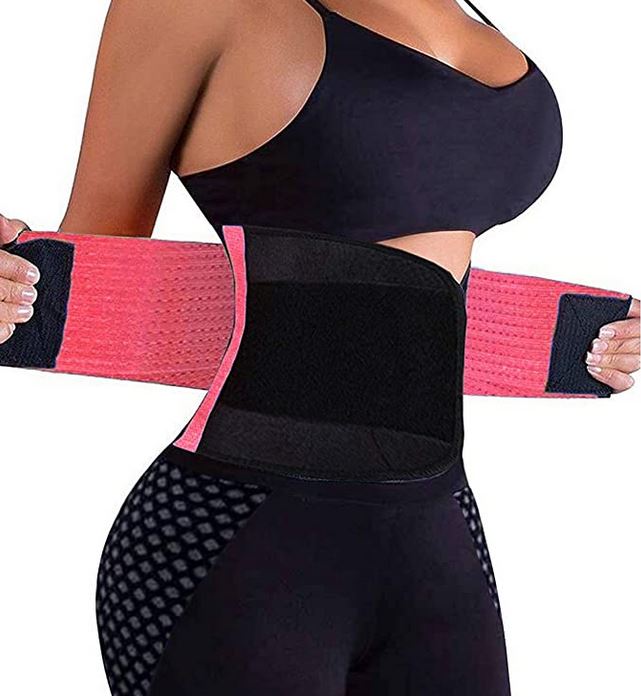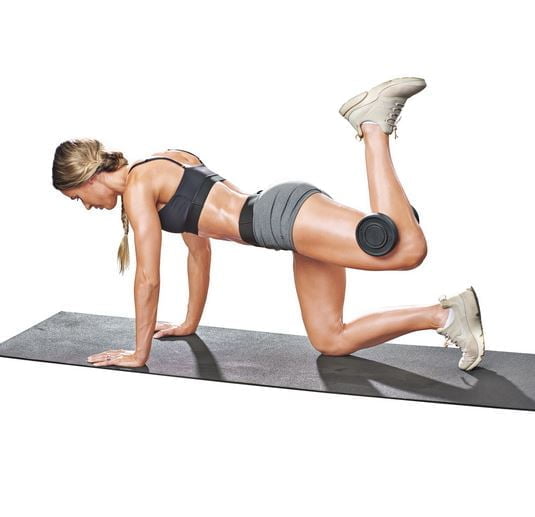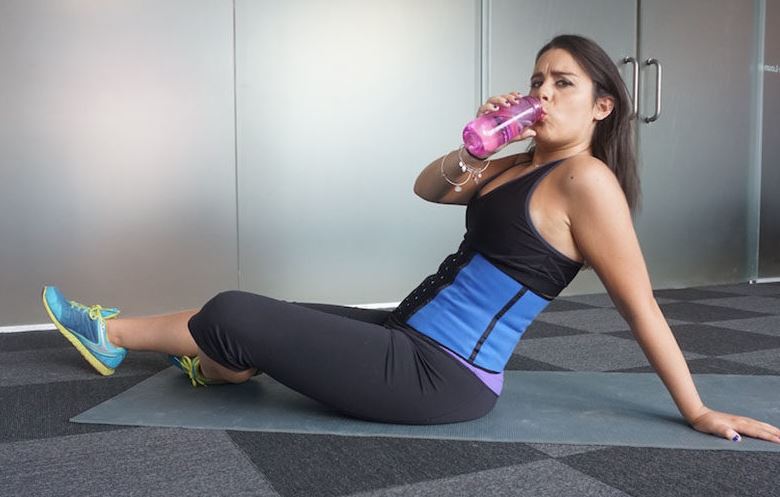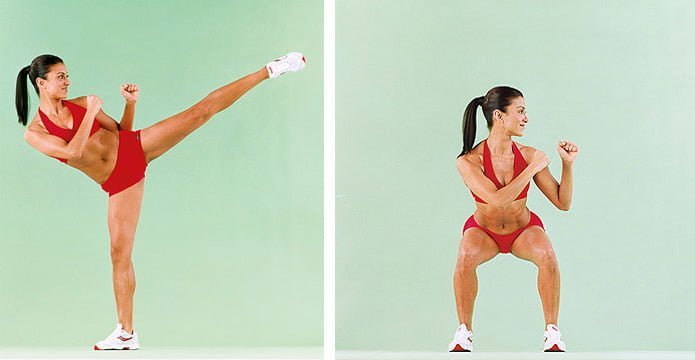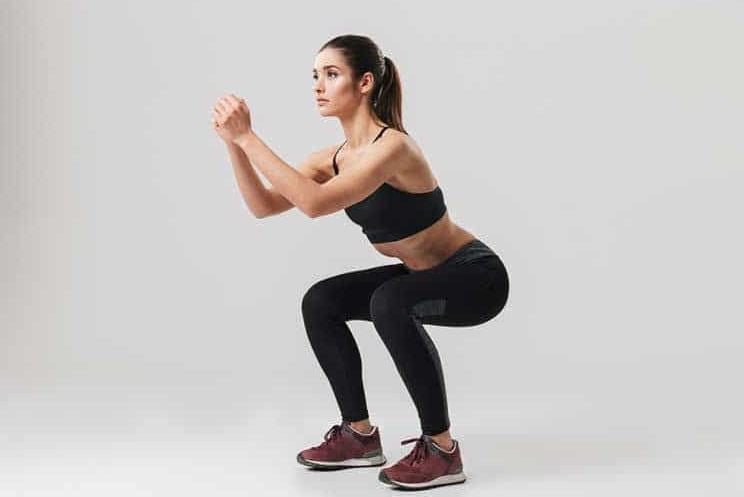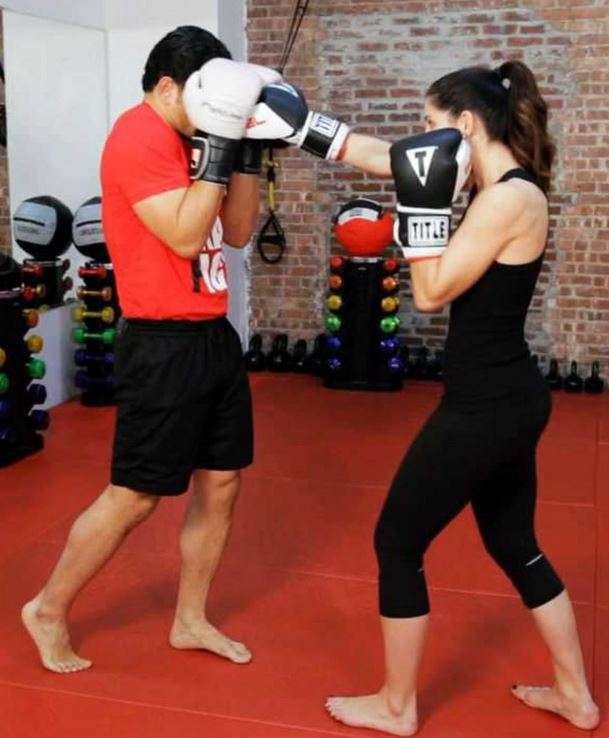Squatting is one of the most go out workouts, you would love and it has numerous benefits such as; stronger joints, increased core strength, large leg muscles, burning calories, and many others. However, to squat is mostly everyone’s choice in the gym.
What then are squats? Squats are exercises involved in most workouts that target a specific group of muscles comprising the glutes, legs, thighs, hips, and calves. So, the amount of weight lifted and the variation of squats can be significant to positive results.
However, it is a fact that any exercise will always be beneficial and, when done without proper techniques, could cause pain to the performer. In the same vein, lower back pain in squats could result from reoccurrence of existing back pain, weak core, much weight, or even lack of proper skills/techniques in squatting.
Nevertheless, if you’re experiencing lower back pain when squatting, this post is here to enlighten you on the following contents; why the lower back pain after squatting, what causes lower back pain squatting, how to prevent lower back pain when squatting, other ways to avoid lower back pain when squatting heavy, should I stop squatting if my lower back hurts and more. Relax as much information comes your way! read this also on 11 Best Lower Back Workouts with Dumbbells Female

Why The Lower Back Pain After Squatting?
Having loved squatting but your lower back pain after squatting has become a hindrance, below are the reasons why you have not excelled in increased strength, sprint speed, and power;
- Poor or wrong techniques
- Much pressure due to more weight
- Strained muscles
- Previous back injury
- Insufficient hip and ankle mobility
- Lack of strong core
- Skipping warm-ups
What Causes Lower Back Pain Squatting?
Since squats are a great exercise with so many benefits, let’s see what could have caused the lower back pain in squatting. The below are significant causes of lower back pain in squats apart from the soreness that comes with squatting.
· Wrong Techniques
The lower back pain during and after squatting comes from failed techniques or your body parts positioned and misused. As a fitness instructor, collapsing foot arches, knees, and backward tilting hips propel factors to unfair practices. Setting your body from the start of the exercise to finishing the squat is paramount to staying pain-free.
· Back Injury
If you have had a back injury that had not healed thoroughly, lower back discomfort due to squatting might reoccur and hamper the healing. I recommend you stop squatting for some time to help your spine stable once again.
· Insufficient Hip Mobility
You will have pain in your lower back if you don’t have hip and ankle mobility. Being locked in a limited position and supported by a chair all day makes your body adapt to the seated position. So far, leading to muscular withering and reduced dynamic movements of your glutes and hips flexors.
· Weak Core
Squats mount much pressure or strain on the core muscles, so spine stabilization is vital. A lack of a strong core as you load your weight in a back squat might cause hyperextension of your back. Thereby results in lower back pain after squatting.
How To Prevent Lower Back Pain When Squatting?
Preventing lower back pain when squatting requires the following strategies;
· Spinal Alignment
Having proper spinal alignment is good for maintaining a straight-ahead when squatting. Making sure your squat will be beneficial requires reasonable control and maintaining the correct form. I recommend you concentrate more on the structure and management than depth since squatting too deep might negatively affect you.
· Good Starting Position
A correct starting position will enhance your performance, but incorrect positioning of the feet, hips, and knees will lead to a higher rate of injury, mostly lower back pain when squatting.
· Mobility of Joint
Squatting requires a high rate of ankle mobility to enhance control and balance in all parts of your workout. Hence, if your ankle is not flexible, you might eventually feel lower back pain as your heels move off the floor with increasing weights. So, improving your techniques and progress in squatting would be best to reduce potential injury risks.
· Squat Variations
As a fitness trainer, I recommend you start from simple squats to complex ones and introduce suitably and accommodating variations for your body system. Remember that barbell back squats can potentially cause pain as you load the weights across your back. Nevertheless, follow the instructions of your fitness trainer properly.
Other Ways To Prevent Lower Back Pain When Squatting Heavy
Let’s look at the other preventive measures to lower back pain when squatting heavy;
- Improvement in your squatting techniques
- Strengthen your core with some exercises.
- Have less weight to avoid much pressure
- Have good rest at intervals
- Engage in proper nutrition (eating balanced meals).
- Warm up before workouts (squatting)
How To Fix Lower Back Pain From Squats?
Although mild lower back pain when squatting can result in a severe injury, don’t ignore the discomfort you will have while performing any workout. Let’s see the simple methods for fixing lower back pain from squats.
Adjust Your Technique
Working with a fitness trainer to instantly correct your techniques to avoid hurting your lower back in squatting or other workouts. Always pay attention to;
- Distributing the weight evenly instead of on one side.
- Avoid an arched back (tilt your pelvis forward to stop the arch)
- Avoid pushing your knees beyond your toes, as they should be above your feet.
Lower The Weight
Lifting too much weight can exert high pressure on your lower back, leading to lower back pain when squatting.Establishing a strong core is crucial before pushing yourself with multiple weights. So far, slow, steady, and reasonable increases in weights are vital to preventing lower back pain after squatting.
Visit/Talk to A Professional
Suppose you often experience lower back pain when squatting. In that case, you might want to talk to your fitness trainer, a healthcare expert, or even a physiotherapist about the issue if there are any previous injuries. So far, diagnoses, management, proper care, and control as your recovery process will become faster and more effective than managing it yourself.

Why Does My Lower Back Hurt When I Workout Legs?
Your lower back will hurt when you work out your legs due to poor posture and minor injuries in the muscles of the lower limbs. However, it could also be reoccurring pain of an underlying condition, like arthritis or possibly fibromyalgia. The pain should improve with rest and some home treatments, but if there is persistent pain in your lower back, kindly see a fitness expert or a doctor.
Should I Stop Squatting If My Lower Back Hurts?
Yes, you should stop squatting if your lower back hurts. Although, it pays to listen to your body and never push yourself into a sharp pain. Instead, have a break and start again when your body is ready. It could be severe if lower back pain doesn’t disappear after 72 hours. Seeing your doctor will be the best option.
How Do You Get Rid Of Lower Back Pain Fast?
Are you looking for fast ways to get rid of lower back pain? Fortunately for you, below are remedies to get immediate relief on the lower back pain as you take an active approach to this matter by making simple changes to your habits and lifestyle. Although, you might be surprised by what you will get.
- Exercise to loosen your muscles
- Use hot or cold treatments
- Involve in a stretching routine like Yoga stretch known as “Child Pose.”
- Getting better shoes (shoes having orthotic insoles)
- Get good sleeping time
- Reduce your stress
How Do You Stretch Out Lower Back Pain After Squat?
Avoiding lower back pain after squatting requires proper stretching. In essence, stretching permits your lower back muscles to stay flexible and loose. Nevertheless, putting much pressure on them during workouts and repeating them can help relieve lower back pain.
Here are some stretches and tips for doing them;
The Cobra

Procedure:
- Lie on the floor as your stomach face the ground
- Press your palms to the floor in front of your shoulder
- Push your pelvis to the floor as you push your torso away, so your back arches take the cobra shape.
- Hold Breathe deeply and hold for 2 to 3 minutes.
- Have the desired rep.
The Two-Knee Twist

Procedure:
- Lie your back to the floor as your arms spread out on either side, and your body makes a T-shape.
- Make your knees at a right angle to the chest as you have placed them together and drawn them up.
- Press your shoulders firmly to the floor and slowly lower your knees to the right.
- Hold your position for 2 to 3 minutes, bring your knees back to the center, and do likewise to the other side.
- Ensure your shoulders are firm to the floor, and your knees are down to the floor.
- Have the desired rep.
Leg Up The Wall

Procedure:
- Lie on the floor as your back face the ground.
- Place your feet on the wall in your front.
- Scoot close to the wall as you move your feet upward until your buttock touches the wall.
- Take a deep breath as you feel the relaxation of the upper thigh and lower back muscles.
- Hold your position for about 8 to 10 minutes.
Why Does Squatting Hurt My Lower Back
Squatting is a relatively safe workout; though the lower back and the pelvis are the most vulnerable parts during this workout, it’s never uncommon for weight lifters to experience lower back pain after squatting. Here are the circumstances that propel you to hurt your lower back pain after squatting;
- Performing squats with the wrong technique
- Progressing too quickly when you are starting out
- Weak glute muscles and core
- Low rate of motion by the joints, especially the ankles.
Conclusion
To wrap this up, fixing or reducing lower back pain after squatting is easy as adjusting to your habit, lifestyle, technique, and workout schedule are essential. However, I have highlighted the reasons and circumstances for experiencing lower back pain, the preventive measures, and quick, possible solutions to this issue.
Any persisting lower back discomfort could trigger severe problems that need professional attention. At this moment, you must talk to your doctor when experiencing any discomfort or pain in squats for proper advice and recommendations before the situation gets out of hand.
Although, I recommend you have warm-ups, activate your hip and glute mobility, and develop a solid core to squat pain-free as you understand and explore the causes and make the most of it in having a wonderful squatting experience. Do like and share this article with others!

